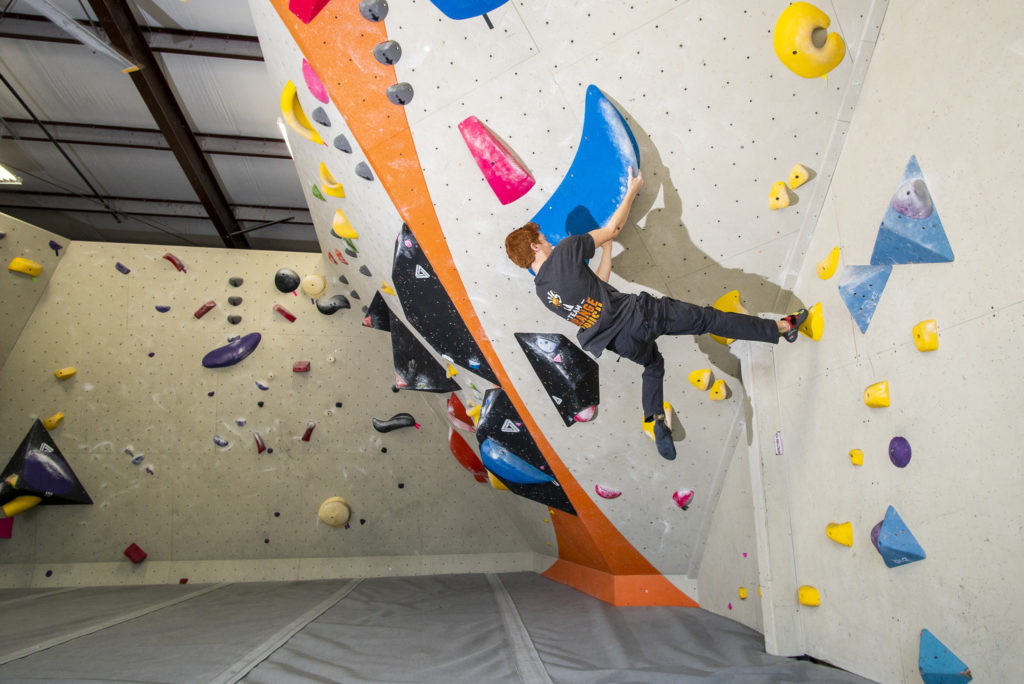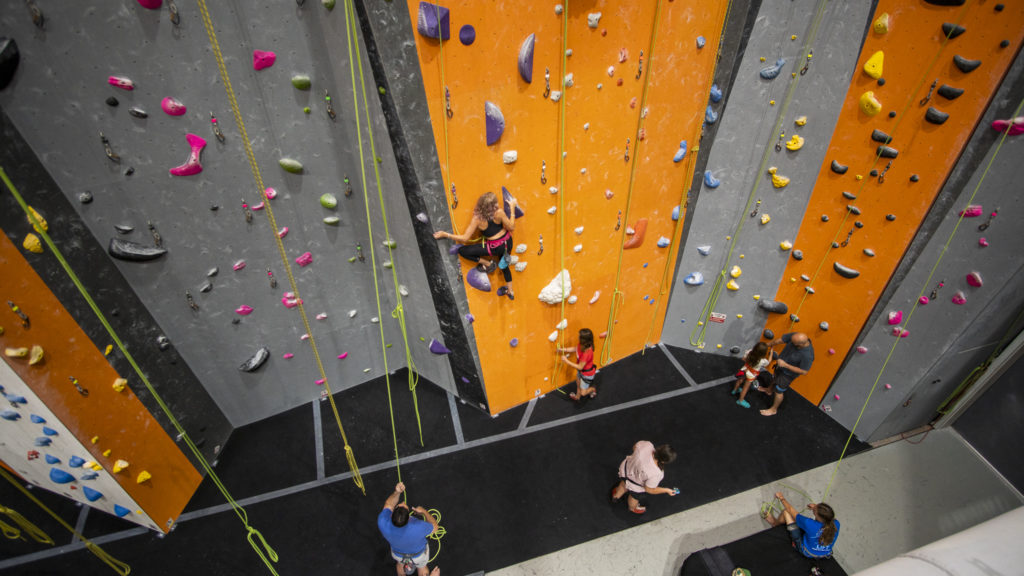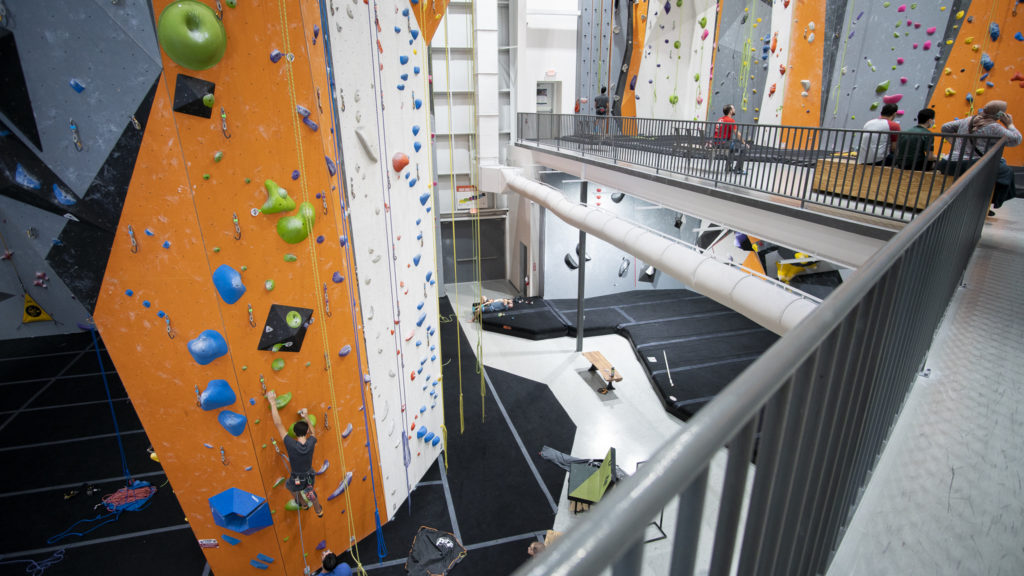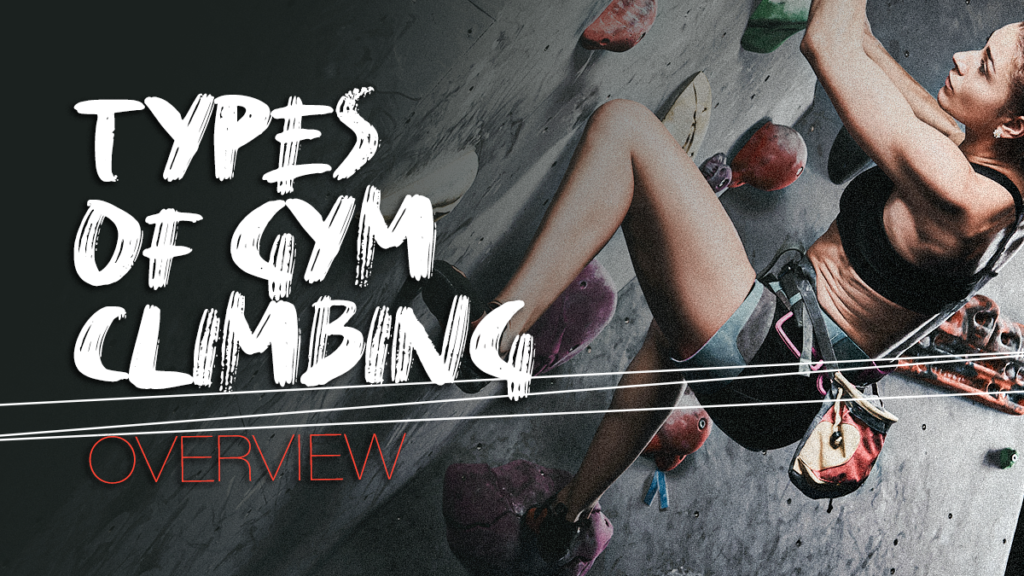The challenge and adventure of climbing are enticing for many folks, but with tall walls and bright colors, entering a climbing gym for the first time can be overwhelming. To help you better navigate climbing gyms, we have compiled a guide to the different sorts of gym climbing and terrain you’re likely to encounter. As a beginner, it’s essential to understand the differences between different types of climbing.
Generally, three types of gym climbing are bouldering, top rope climbing, and lead climbing. Each of these areas hones different skills and provides various kinds of experiences. The right gym climbing experience can be best suggested based on skill level, budget, comfortability, desired level of challenge, and access to fellow climbers. Bouldering takes the least equipment and can be done independently, whereas top rope and lead climbing require more equipment and a partner.
Pro-tip: If you are brand new to climbing and don’t yet have gear or belay buddies, don’t fret! Gym staff is there to assist you with questions, and most gyms offer not only equipment rental and belays by staff. Clinics specific to learning new skills and practicing new forms of climbing with experienced folks may also be available based on the gym. Contact climbing gyms in your area to find out what resources are available to you!
Types of Gym Climbing
Bouldering

In a climbing gym, bouldering is done on shorter walls or other shaped surfaces where climbers are not attached to ropes. You’ll follow color-coded routes often rated by difficulty on a numerical scale. Bouldering can be a great way to start climbing if you’re hitting the gym solo or on a budget- the only equipment you’ll need is shoes and chalk, if preferred. While bouldering requires less equipment, not being tied in also means more risk. Be aware of your surroundings when bouldering. Folks may be descending from a route or climbing around you. As you begin, climbing routes appropriate to your skill level is also vital. While the challenge is a crucial part of climbing, going after the most challenging routes is more likely to endanger a climber and other climbers at the gym. If the height involved in bouldering feels intimidating, take some time to get comfy on boulder problems you feel more secure on before attempting those more difficult moves!
Top Roping

Top rope is the other most common type of gym climbing next to bouldering. That is the climbing most folks imagine when picturing climbers on those prominent, color-speckled walls. Top rope climbing takes a climber and a belayer (the person taking in slack as the climber ascends), both of whom wear harnesses and are secured to a rope. This rope is fed through an anchor system at the top of the wall, allowing the climber to be held up as soon as they leave the ground. Top rope climbing, like bouldering, usually consists of colored routes rated by difficulty. The equipment required for a climber on top rope is a harness, shoes, a belay device, and chalk based on preference. Top rope climbing can help build endurance with longer routes or even the courage to try bolder moves as you learn to trust your harness, rope, and belay partner. If you’re still working on building up those climbing muscles, beginner top rope routes may also feel more accessible than beginner bouldering routes.
Lead Climbing

Lead climbing is usually the next step in climbing for those who have gotten comfortable and competent in the skills of top rope. Lead climbing also involves a climber-belayer pair but requires more equipment than top roping. It involves many of the same elements of top roping. Instead of the rope being fed through a permanent anchor above, the climber begins with their rope unattached to anything besides the climber and belayer. The climber must tackle the lead route bit by bit, pausing every several feet to place gear that serves as an anchor point. The climber can be caught by their last-placed piece of gear, but if they’ve already moved higher but not yet placed their next piece, they will fall a distance before being caught! Despite the additional risk, many climbers can’t resist the technical and physical challenges of lead climbing. Even if you don’t think lead could ever be for you, see if you can spot a lead climbing pair next time you hit the gym to see some impressive skills.
Whichever type of indoor climbing you decide to explore first or venture into next, remember there is always a vast amount more to learn in climbing! As a climber, it is important always to practice risk management skills in the gym and keep up with best practices regarding equipment and technique. If you have never climbed before or are learning a new skill, ask for guidance and seek out instruction. Above all else, remember not to be discouraged! Entering a new sport and community can be challenging, but the more time you spend practicing and learning new skills, the more comfortable you will be! Let us know your favorite type of climbing so far or the type you try first in the comments!

